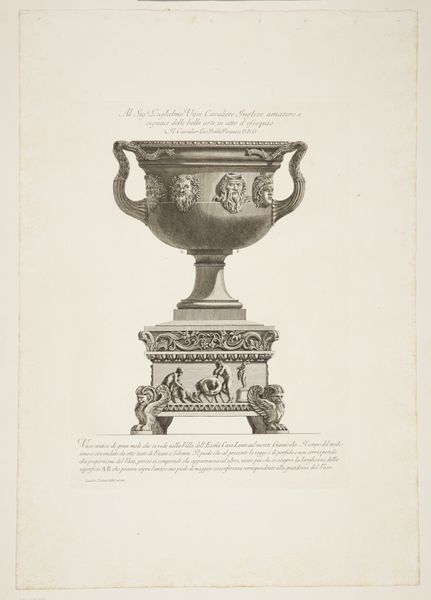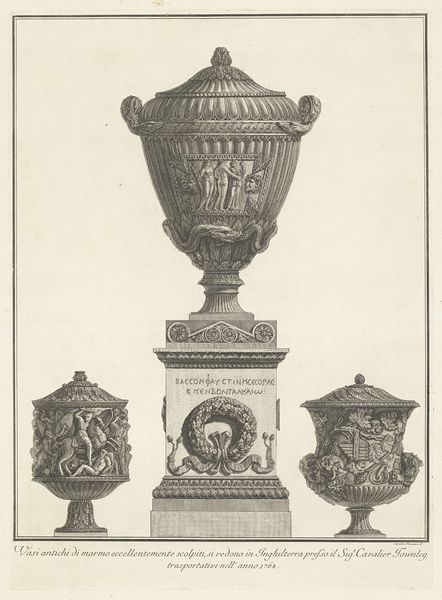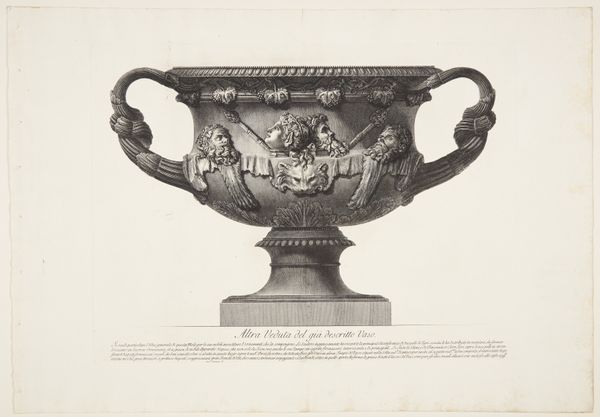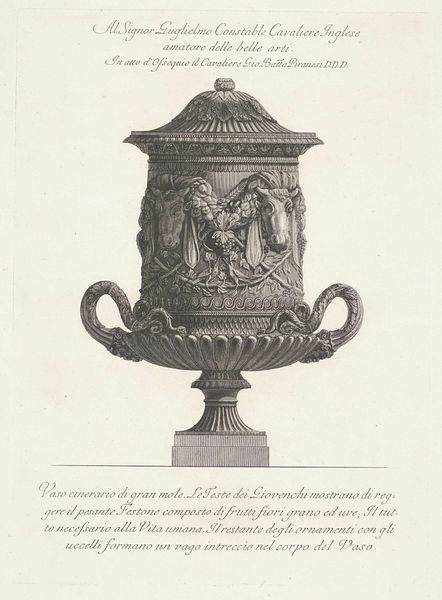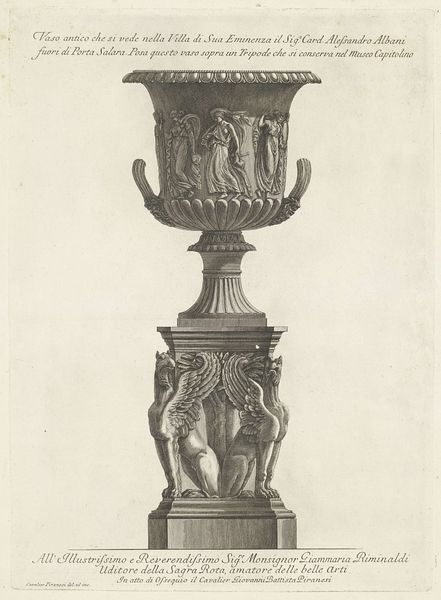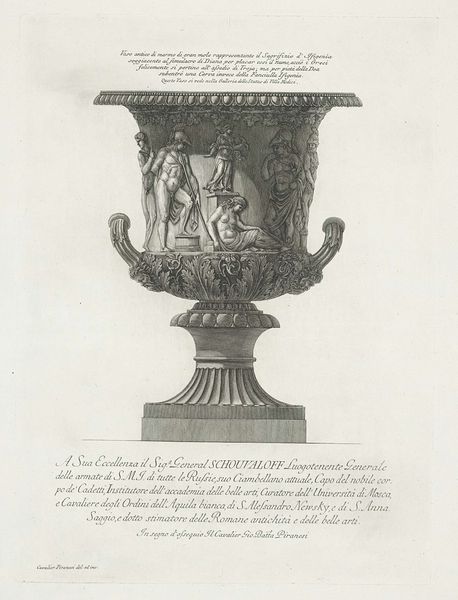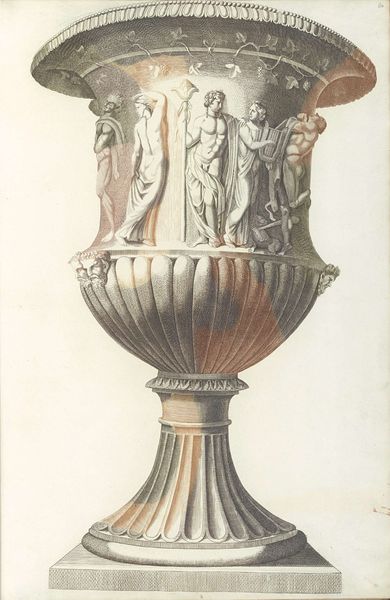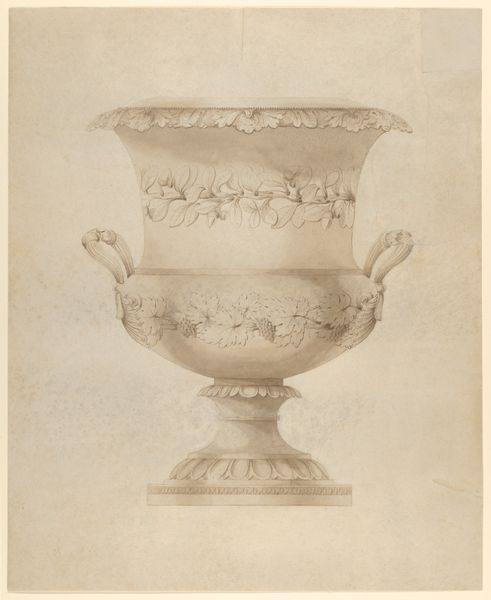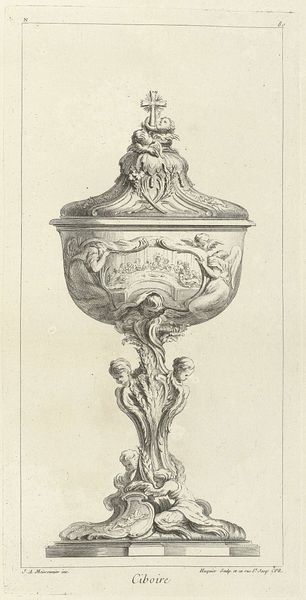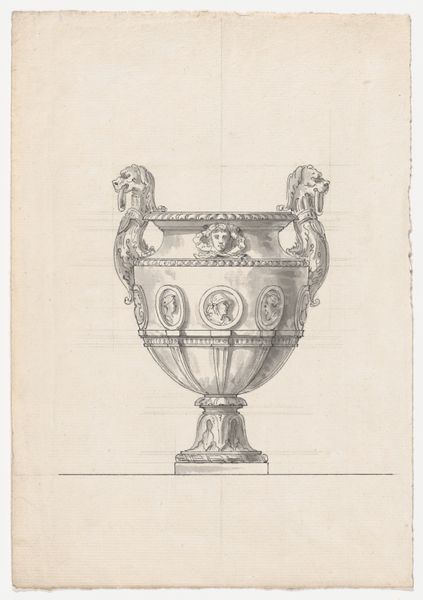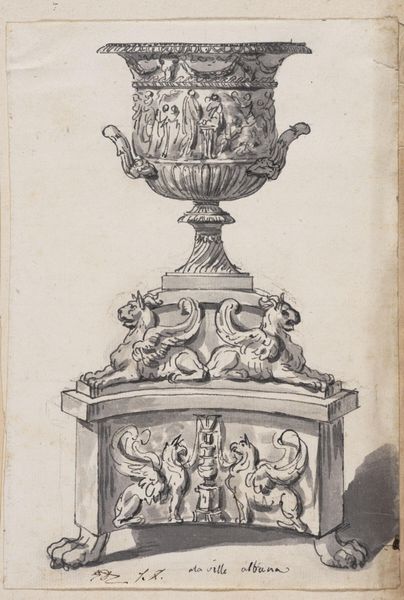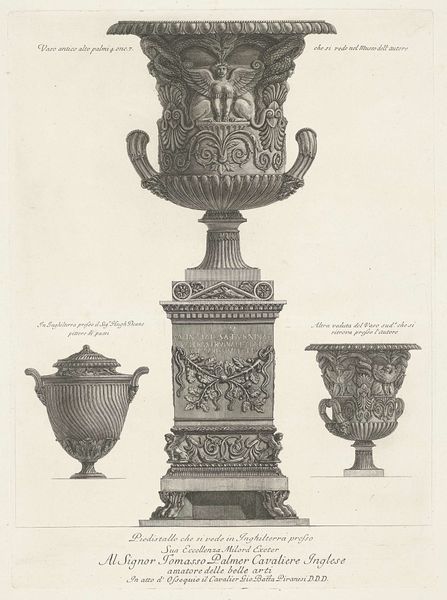
Dimensions: height 528 mm, width 382 mm
Copyright: Rijks Museum: Open Domain
Editor: So, this is Giovanni Battista Piranesi's "Vase with masks on a pedestal" from 1778. It's an engraving, and there's a real weightiness to the design, even though it’s just a print. The details in the masks and the figures below are quite striking. What grabs your attention when you look at this? Curator: Well, considering Piranesi's wider body of work, especially his prints of Roman ruins, this vase, dedicated to an English art lover, is very telling about the art market and the consumption of antiquities at the time. Neoclassicism was booming, but Piranesi blends it with a Baroque sensibility, almost overwhelming the viewer with detail. Where do you think this kind of imagery fit into the social landscape of 18th-century Europe? Editor: I guess it fed into that Grand Tour culture, didn't it? Showing off your refined taste by collecting these kinds of representations of classical art. So it’s less about the object itself and more about its status as a collectible? Curator: Exactly. The print serves as a surrogate. People who couldn't own the actual vase could still participate in the culture surrounding it. Look at the inscription—it's a clear indicator of patronage and the role of wealthy individuals in shaping artistic production. But consider too, Piranesi’s fantasy and reconstruction – is he creating an accurate document or a more theatrical interpretation of antiquity? Editor: A theatrical interpretation, definitely! It's almost like he's creating his own ancient artifact. Something completely new. Curator: And that's where the power lies, isn’t it? It speaks volumes about the politics of imagery, how artists like Piranesi shaped the narrative around classical antiquity to fit the desires of their patrons and the market demands. It makes you think about the role of art in constructing and perpetuating ideas of cultural value and authority. Editor: Absolutely! It’s so much more than just a pretty vase! I see how it is also an interpretation. I now appreciate how social context really shapes the artwork. Thanks!
Comments
No comments
Be the first to comment and join the conversation on the ultimate creative platform.
